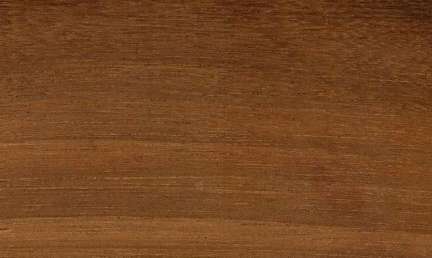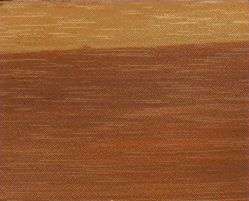 
Manbarklak (Eschweilera sagotiana)
Family: Lecythidaceae
Common names: Atereba, Black Kakaralli, Black kakeralli, Coco Cristal, Coco de Mono, Common black kakaralli, Haudan, Jarana, Kakaralli, Kakeralli, Kwateri, Kwatru, Manbarklak, Mata mata, Montanero, Oemanbarklak, Olleto, Oxito, Poko, Prukoi, Tamad, Tete Congo
Distributed in: Brazil, Costa Rica, French Guiana, Guyana, Suriname, Trinidad and Tobago (Central America, Latin America)
Distribution overview: In the Guianas and AmapBrazil) it can be found in non-flooded forests as a canopy tree.
Common uses: Barge fenders, Boat building (general), Boat building: framing, Building construction, Building materials, Cabin construction, Construction, Crossties, Docks, Dockwork, Factory construction, Factory flooring, Flooring, Flooring: industrial heavy traffic, Harbor work, Heavy construction, Marine construction, Millwork, Mine timbers, Naval architecture, Pile-driver cushions, Piling, Pulpmill equipment, Raft floats, Rafts, Railroad ties, Sporting Goods, Sub-flooring, Turnery, Wharf construction
Environment profile: Widespread
Tree size: Trunk diameter is 100-150 cm
Colors: the heart isRed, Reddish brownand the sapwoodWhite to yellow, Yellow.The grain isStraight, the textureUniformand the lusterSlightly lustrous
Natural durability: Susceptible to insect attack, Very durable
Odor: No specific smell or taste
Silica Content: Moderate silica contact
LightInduced Color Change: Darker
Kiln Schedules: Dry at a slow speed
Drying Defects: Slight twist/warp, Warping can be expected
Ease of Drying: Variable
Tree Identification: Bole/stem form is straight
Comments: General finishing qualities are rated as good General finishing qualities are rated as satisfactory
Blunting Effect: Little
Boring: Fairly easy to very easy
Carving: Fairly Easy to Very Easy
Cutting Resistance: Moderate to saw
Gluing: Very Good to Excellent Results
Mortising: Fairly Easy to Very Easy
Moulding: Fairly Easy to Very Easy
Movement in Service: Fairly Easy to Very Easy
Nailing: Fairly Difficult to Very Difficult, Possible if prebored
Planing: Very Good to Excellent
Resistance to Impregnation: Very difficult to treat
Response to hand tools: Responds Readily
Routing recessing: Fairly Easy to Very Easy
Sanding: Fairly Easy to Very Easy
Steam bending: Moderate
Screwing: Fair to Good Results, Fairly Easy to Very Easy; Turning: Fairly Easy to Very Easy
Painting: Very Good to Excellent; Polishing: Very Good to Excellent; Staining: Very Good to Excellent;
- Numerical data Metric
- Numerical data English
- Strength properties
- References
 |
 |
 |
 |
| Item |
Green |
Dry |
Metric |
| Specific Gravity |
0,74 |
0,9 |
|
| Density |
|
945 |
kg/m3 |
| Bending Strength |
1217 |
1694 |
kg/cm2 |
| Crushing Strength |
108 |
169 |
kg/cm2 |
| Hardness |
|
1310 |
kg |
| Impact Strength |
|
|
cm |
| Shearing Strength |
|
176 |
kg/cm2 |
| Stiffness |
188 |
214 |
1000 kg/cm2 |
| Tangential Shrinkage |
9 |
|
% |
| Radial Shrinkage |
5 |
|
% |
| Weight |
929 |
865 |
kg/m3 |
| Maximum Load |
0,77 |
1,33 |
cm-kg/cm3 |
| Toughness |
|
298 |
cm-kg |
| Static Bending |
735 |
886 |
kg/cm2 |
|
 |  |  |  | | Item | Green | Dry | English | | Bending Strength | 17312 | 24098 | psi | | Crushing Strength | 1548 | 2404. | psi | | Density | | 59 | lbs/ft3 | | Hardness | | 2890 | lbs | | Maximum Crushing Strength | 7410 | 10679 | psi | | Shearing Strength | | 2512 | psi | | Static Bending | 10466 | 12603 | psi | | Stiffness | 2686 | 3055 | 1000 psi | | Toughness | | 259 | inch-lbs | | Work to Maximum Load | 11 | 19 | inch-lbs/in3 | | Specific Gravity | 0.74 | 0.9 | | | Weight | 58 | 54 | lbs/ft3 | | Radial Shrinkage | 5 | | % | | Tangential Shrinkage | 9 | | % | | Volumetric Shrinkage | 16 | | % | |
Density (dry weight) = 67-75 lbs/cu. ft
Density (dry weight) = 61-67 lbs/cu.ft
Modulus of Elasticity (stiffness) = high
Max. crushing strength = high
Shearing strength (parallel to grain) = high
Density (dry weight) = over 75 lbs/cu. ft
Shrinkage, Tangential = large
Shrinkage, Radial = moderate
Hardness (side grain) = very hard
Bending strength (MOR) = high
Shrinkage, Tangential = fairly large
Shrinkage, Radial = fairly large
Bending strength (MOR) = very high
Shrinkage, Tangential = moderate
Shrinkage, Radial = large
Shearing strength (parallel to grain) = medium
Max. crushing strength = low
Berni, C.A., Bolza, E., Christensen, F.J.,1979,South American Timbers - The Characteristics, Properties and Uses of 190,Species,C.S.I.R.O Div. Building ResearchBrown, W.H.,1978,Timbers of the World, No. 2 South America,TRADA, Red Booklet SeriesChudnoff, M.,1984,Tropical Timbers of the World,U.S.A. Department of Agriculture, Forest Service, Forest Products,Laboratory, Madison.Dickinson, F.E.,1949,Properties and Uses of Tropical Woods 1,Tropical Woods,13(95,pp1-140Fanshawe, D.B.,1954,Forest Products of British Guiana Part 1 Principal Timbers,Forest Department British Guiana Forestry Bulletin (New Series 2nd,Edition,No.1Lamb, A.F.A., Wangaard, F.F.,1950,The Gluing Properties of certain Tropical American Woods,Yale Univ. School of Forestry Technical Report,4Polak, A.M.,1992,Major Timber Trees of Guyana A Field Guide,The Tropenbos Foundation Wageningen, The NetherlandsRecord, S.J., Hess, R.W.,1943,Timbers of the New World,Yale University PressT.R.A.D.A.,1982,Timbers for river and sea constructions,TRADA Wood Information Section 0, Sheet 6Wangaard, F.F., and A.F. Muschler. 1952. Tropical Woods - Properties and Uses of Tropical Woods, Volume III, No. 98. School of Forestry, Yale University, New Haven, Connecticut.Wangaard, F.F., Muschler, A.F.,1952,Properties and Uses of Tropical Woods 3,Tropical Woods,14(98, pp1-190
|









